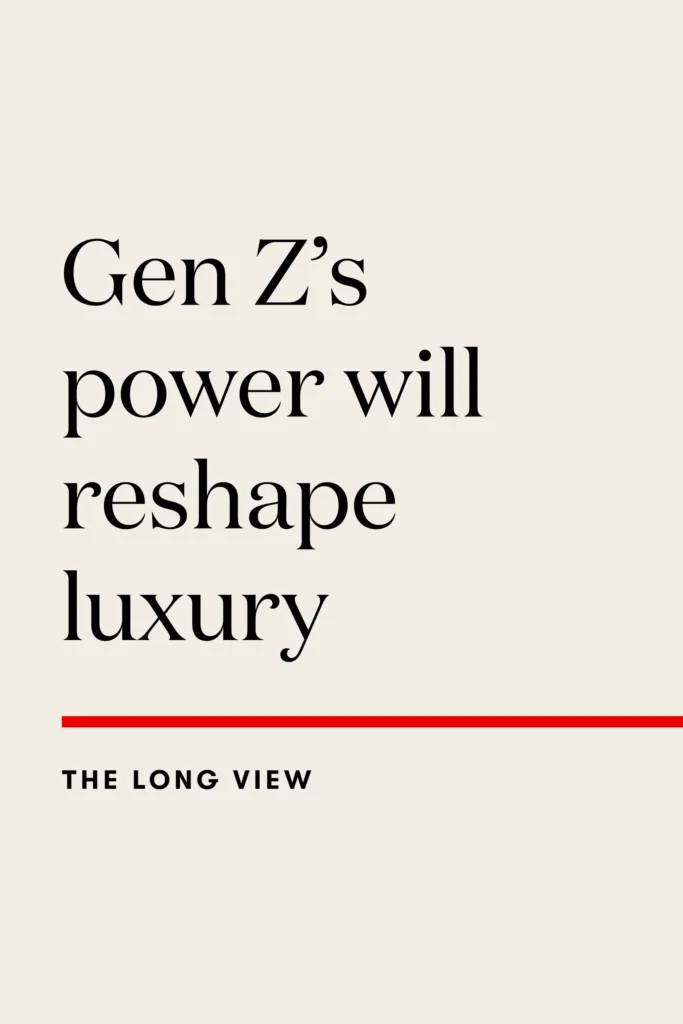Gen Z and Millennials Reshaping Fashion
Generation Shift: How Gen Z and Millennials are Reshaping the Fashion Industry
Fashion Industry’s Response to the Rising Demand for Sustainability and Inclusivity by Gen Z and Millennial Consumers.
The fashion industry has always been known for its constantly changing trends and styles, but in recent years, it has been reshaped by the preferences and demands of Gen Z and millennial consumers. These young, digitally-savvy consumers have very different priorities and expectations from their predecessors, and they are forcing brands to rethink their strategies and adapt to new trends and demands.
One of the most notable changes that Gen Z and millennials have brought to the fashion industry is a greater focus on inclusivity and diversity. These consumers are much more conscious of issues related to social justice, and they are demanding that brands take a stand on these issues and incorporate diverse perspectives into their products and marketing.

As a result, we are seeing a greater variety of sizes, skin tones, and body types being represented in fashion advertising and on the runway. Brands that fail to keep up with these trends risk losing relevance and appeal to a significant portion of the market.
For example, the American plus-size women’s clothing brand, Lane Bryant, released its latest campaign in February 2022, featuring plus-size models in a range of sizes, ages and races. This campaign celebrates body diversity and positivity, promoting the brand’s message of inclusivity and acceptance. Similarly, the sportswear brand Nike has introduced a range of athletic hijabs for Muslim athletes, recognizing the importance of diversity in the world of sports.
Another key priority for Gen Z and millennials is sustainability. These consumers are much more aware of the impact that fashion production and consumption can have on the environment, and they are pushing for more sustainable and eco-friendly products and practices.
As a result, we are seeing a greater focus on circular fashion, which emphasizes reducing waste and increasing the longevity of clothing through recycling and resale. Brands are also exploring new materials and production methods that are more sustainable and have a lower environmental impact.
In response to the growing demand for sustainable fashion, many brands have started to implement sustainable practices in their operations. For example, H&M, one of the world’s largest fashion retailers, launched its “Conscious Collection” made of sustainable materials like organic cotton and recycled polyester. The collection is also manufactured using sustainable practices, like water-efficient washing techniques and environmentally-friendly dyes.
Another example is Adidas, which introduced a sneaker made entirely of recycled materials in April 2021. The shoe, named “Futurecraft.Footprint”, has a carbon footprint of only 2.94 kilograms, compared to the industry average of 11.3 kilograms.
In addition to these social and environmental concerns, Gen Z and millennial consumers are also reshaping fashion through their style preferences. The rise of streetwear and athleisure, for example, has largely been driven by these young consumers, who value comfort and practicality over traditional fashion norms.
As a result, we are seeing more collaborations between high-fashion brands and streetwear labels, as well as an increase in the use of performance fabrics and functional design elements in high-end fashion. This shift is also blurring the lines between traditional fashion and sportswear, as more consumers seek out versatile and adaptable clothing that can be worn for a variety of occasions.
For example, luxury fashion house Louis Vuitton collaborated with streetwear brand Supreme in 2017, creating a collection that fused the high-fashion aesthetic of Louis Vuitton with the bold, graphic style of Supreme. Similarly, Balenciaga released its “Track” sneaker in 2018, which features an exaggerated, chunky silhouette inspired by hiking shoes.
Finally, Gen Z and millennial consumers are driving a greater demand for transparency and authenticity from fashion brands. These consumers are more skeptical of traditional advertising and marketing tactics, and they want to know more about the brands and products they are purchasing.
As a result, we are seeing a greater emphasis on storytelling and brand purpose in fashion marketing, as well as an increase in the use of influencer marketing and user-generated content. Brands that can authentically connect with their audience and communicate their values and purpose are likely to resonate more strongly with these younger consumers.
Overall, the rise of Gen Z and millennial consumers is having a significant impact on the fashion industry, from the products being produced to the way brands market and sell their products. Brands that can successfully adapt to these changing consumer preferences and priorities are likely to be the most successful in the years to come.
Image Source : Vogue







